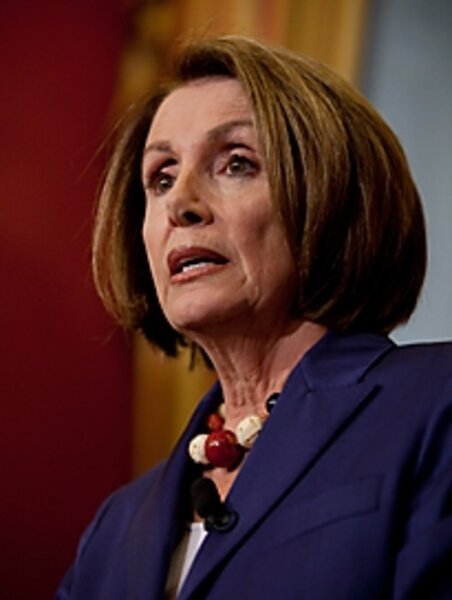New healthcare bill won't hurt deficit. What about your wallet?
Loading...
| Washington
What’s in a score?
The Senate Finance Committee’s healthcare plan got a clean bill of fiscal health from key congressional scorekeepers – that is, it insures most Americans without adding a dime to the federal deficit, according to nonpartisan Congressional Budget Office (CBO).
But does it shift the burden of healthcare costs to players outside the Beltway? That’s the new political fault line heading into a Senate Finance panel vote, which could come as early as Friday.
The CBO score doesn’t measure the fiscal impact on families, businesses, healthcare providers, or state and local governments. What will happen to them if the bill’s new mandates, fees, taxes, and penalties become law?
Nor does the CBO score capture the cost of doing nothing.
The importance of CBO scores
On Capitol Hill, that CBO score can be a game-changer. A poor CBO score sunk the Clinton administration’s healthcare reform bid in 1994.
That’s partly why House Speaker Nancy Pelosi on Thursday asked the CBO to score three versions of a government-run public option. It is part of the House's efforts to merge the work of three committees into a single bill. She is hoping that the CBO scores will rally support for the strongest version of a public option.
"There is absolutely no question the robust public option scores very well: $110 billion [in savings]. And that is why I so strongly supported it," she told reporters at a briefing Thursday. She says that she expects the robust version of the plan to outscore the other two by $85 billion over 10 years.
Eventually, the House version of reform must reconciled with a final Senate plan. There, too, the CBO score is the basis for comparing options.
CBO’s score for the Senate Finance Committee’s version of healthcare reform, released Wednesday, projects a $81 billion surplus over the next 10 years, putting healthcare reform back in the realm of the fiscally feasible. The Senate Finance plan does not include a public option.
“CBO also finds that the plan will expand coverage to 94 percent of all Americans,” says Sen. Kent Conrad (D) of North Dakota, a member of the Senate Finance panel. “This plan won’t solve all our problems. But it is a good beginning, and it deserves our support.”
Deficit-neutral to whom?
But Senate Republicans say that a narrow focus on the federal government finances obscures the costs outside the Beltway.
"I worry that some of my colleagues will focus only on the deficit-neutral piece of CBO’s document,” said Sen. Charles Grassley of Iowa, the top Republican on the Finance Committee. “A celebration of the deficit effects masks who pays the bills.”
“When people have been laid off or are worried about getting laid off, the idea of new taxes on employers and individuals should concern all of us. I'd like to see Congress insure more Americans with less stress on the weakest economy, including family finances, in decades,” he added in a statement.
The newly minted CBO score puts the Finance bill’s cost over the next decade at $829 billion. With cuts to Medicare and other federal programs, along with new fees and taxes, that nets an $81 billion reduction in the federal deficit.
By 2019, 94 percent of legal US residents will have insurance coverage, reducing the ranks of the uninsured by 29 million. That leaves 25 million still uninsured, including more than 8 million unauthorized immigrants, according to the CBO’s preliminary analysis.
That compares with a version by the Senate Health, Education, Labor, and Pensions Committee that scored $597 billion in the red. The last CBO score on a House plan projected that it would add $239 billion to the federal deficits from 2010-2019. All included some version of a public option.
“Those estimates are all subject to substantial uncertainty,” said CBO director Douglas Elmendorf, in an Oct. 7 letter to Sen. Max Baucus (D) of Montana, who chairs the Senate Finance panel.
Healthcare's hidden costs
But the bigger uncertainty, both fiscally and politically, is how these new mandates, fees, and charges will affect budgets outside the Beltway. It’s a tough debate for reform advocates to win, because many of the costs in the current healthcare system are hidden, including the cost of doing nothing.
“Workers don’t understand that employer-provided health plans are coming out of their wages. Employers get to deduct it and employees don’t have to pay taxes for it. But the tax subsidy means that somebody is paying for it and everybody’s income taxes are higher,” says James Horney, director of federal fiscal policy at the Center on Budget and Policy Priorities.
“That’s why fixing healthcare is so hard, because people don’t really understand what they’re paying now and what’s going to drive it up in the future,” he adds.
-----
Follow us on Twitter.






